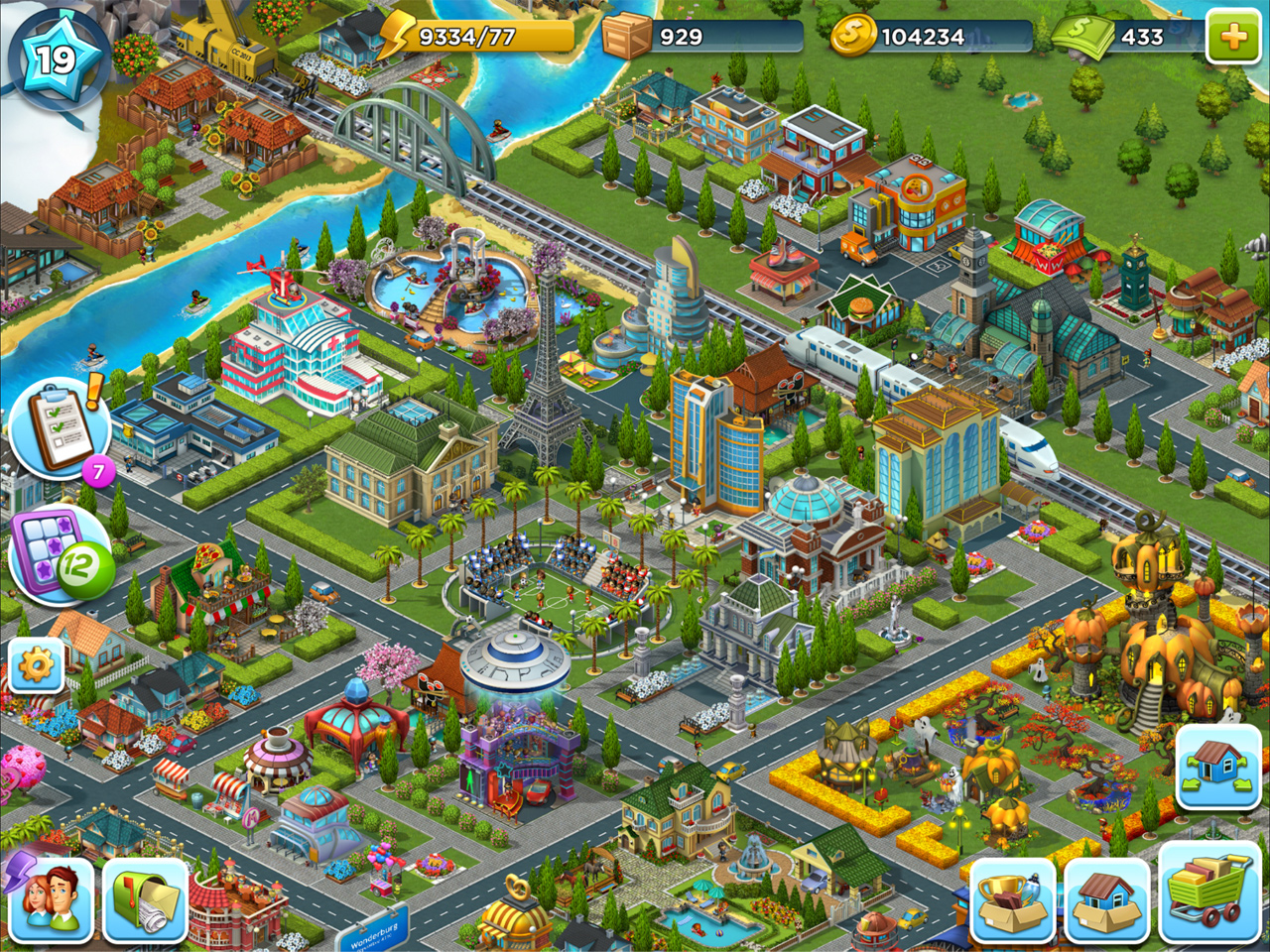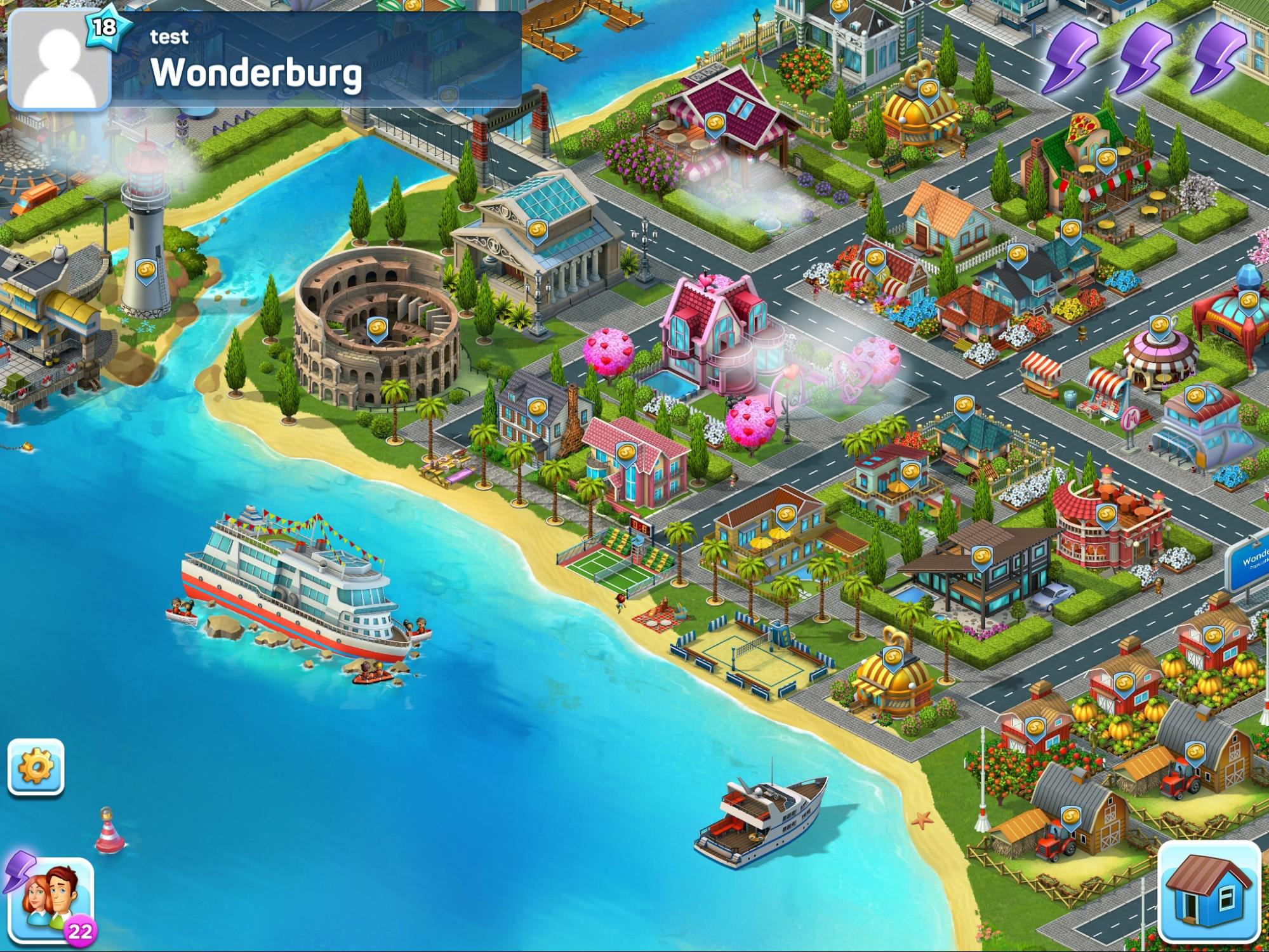The Playkot team is releasing a mobile version of the SuperCity builder to the world this summer. We talked with the authors of the project about how the work on the new game was going on and about the processes within the company.
Playkot was one of the pioneers of the social market in Russia, but one of the last to enter the mobile games market. Why?

Alexander Pavlov, Co-founder
Alexander Pavlov, co-founder: This is due to the way we approached the distribution of attention and forces. We tried to develop social and simultaneously conduct experiments in mobile. The main attention at the same time went to the social. At that time, we did not see an opportunity for ourselves to transfer the main forces to mobile. It appeared a couple of years ago, and we took advantage of it.
There are sprinter runners, and there are stayers. So far we are more of a stayer company: we run slower, but further than many sprinters. At the same time, we already know how to become a sprinter at the right moment, when the next big move of games to a new platform takes place.

Is Mobile SuperCity a classic port? Will players in the social version be able to launch their cities from the mobile?

Sergey Kovalev, producer of the mobile version
Sergey Kovalev, producer of the mobile version: Initially, we planned to simply port the web version to mobile devices. However, the longer we worked on porting, the more we realized that direct porting would not work – the mobile platform requires big changes and adaptations of balance, mechanics, interface and visual style.
When making all these changes, it was important for us not to lose the spirit of the game, which we successfully coped with. Now mobile SuperCity is still the same game about building a dream city, but in a different format. Both visually, and balance, and low-level interaction, the mobile version differs significantly from the original.
At the same time, we immediately abandoned the idea of a cross-platform game. I wanted to untie the development from the goals of the web version and allow the project to develop independently. After all, SuperCity on the web is an established project with a large team and updates almost every three days. For us, the release of a complete product was more important than the benefits that we could get from cross-platform.

The Supercity team in the natural habitat
When it comes to changing the interface, it is logical and understandable. But why change the mechanics and balance? How should they differ from social and mobile games?
Sergey: There were several reasons to change the balance and mechanics of the game.
Firstly, when developing, we took into account that the original SuperCity is a project with a rich history and a huge amount of the most diverse content and mechanics. Now, a few years later, we can assess how successful this or that innovation was, whether our users like this part of the game, whether it fits into the project. And, of course, take only the best in the mobile version.
Secondly, there are significant differences between the platforms in the frequency and duration of gaming sessions. According to our observations, the average player does several sessions a day on the web, but these sessions are quite long. We can say that their game process is thoughtful, measured. In the mobile version, everything is different – people come in more often, but for a shorter time. The balance of the game should take this difference into account. For example, in the web version, the “work” time of the houses is on average six hours. The same houses in the mobile version make a profit much faster – within forty minutes. There are also more “slow” buildings, but this is rather high-level content, there is not much of it yet.
Finally, it is worth mentioning the differences in the operation of the project. On social platforms, we can release updates with new content at least three times a day. In the mobile market, for obvious reasons, we do not have such an opportunity. Therefore, it was important for us to add mechanics to the game that would become a source of tasks and goals for the player in case a new update is delayed for some reason.
By the way, what are the indicators of the web version of the game now (MAU/DAU / retention)?

Oleg Nalimov, producer of the web version
Oleg Nalimov, producer of the web version: In total, for all platforms, we have MAU – 1,250,000, DAU – 425,000, R1 – 25%.
How long has the development of the mobile version started and how was it going, did you have to start from scratch?
Sergey: Development began in November 2014 with the writing of a prototype for testing core mechanics and removing technical risks. Almost immediately after starting work on the prototype, it was realized that the quality of the graphics of the web version does not meet the modern requirements of mobile game development. We conducted several experiments, as a result of which it was decided to re–render all the houses and decorations – and there are more than 1000 of them! – in a higher (2x) resolution. HD, so to speak.
Full-fledged development started in February 2015. Initially, we planned to finish it in 9 months. And for a while it even seemed that we were slightly ahead of schedule. But then harsh reality invaded our plans.
At first, a team consisting only of programmers worked on the project. Because of this, the game was perceived as a set of technical tasks, and not as a full-fledged product. In addition, one of the serious mistakes in the development was the initial idea to immediately transfer all the content of the web version to mobile.
Fortunately, at the right moment, a person appeared in the team who taught us the magic of fichekata. He helped to estimate the number of game objects that were on the web by that time, and to understand that half of them would be enough for us to launch successfully. It’s the same with game locations. There are five of them in the web version, and one is quite enough for a softlonch. By reducing the amount of content at the launch, we were able to do the remaining tasks really efficiently. And since then we have been using the practice of fichekata everywhere and recommend it to everyone at every opportunity.
Dear readers, cut off the unnecessary!
The turning point for the project was February 2016, when a producer, a leading game designer and an art lead appeared in the team. From that moment on, we began to take the quality of the project to a new level: for example, we redrawn the UI from scratch before we got the level of quality that satisfied us. Against the background of the new UI and houses in HD, the game card began to stand out strongly in quality, and not for the better. There is nothing to do, we decided to redraw it too. We experimented a lot with low-level interaction, completely redesigned the balance and added a lot of new buns, which we had long dreamed of in the web version, but which we never got around to.
After strengthening the team, we managed to accelerate the development and implement the softlonch on July 12, 2016. At the same time, we continued – and continue – to make significant changes to the game, due to which we managed to qualitatively improve the feeling of it. And, of course, the key indicators. For example, for the target audience, we managed to raise the retention of the thirtieth day from 10% at the beginning of the softlonch to 13% now. We plan to release another major update before the global launch in the first half of summer. After that, the most interesting thing will begin: we have a lot of ideas that we want to implement after the global launch, and we already have an update plan by the end of 2017.

Game designers at work
How do the version commands work with each other?
Sergey: SuperCity is one big team, but due to the specifics of the platforms, there is a division into web and mobile in some directions, so we jokingly say that one and a half teams are working on the project.
We have two producers in our team, one is responsible for the web, the other for mobile. At the same time, Oleg and I constantly keep abreast of both versions and share our successful experience of launching new mechanics, events and various experiments.
Since the content of both versions of the game is common, the logical solution was not to separate the artists. We also managed to keep one version of the server, so there is also no separation by platform among server programmers. But the game designers of the web and mobile are already different: three people are working on the mobile version, and two are on the web. We did not come to this immediately, only over time it became obvious that there were quite a lot of specifics on the mobile, adaptation and significant processing of mechanics and balance were required, and the logical step was to select a game designer who would focus exclusively on the mobile version.
Due to the specifics of the platforms, the client programmers and testers of the versions are also different. The common team members have a leader Oleg – historically, these people were in the web team.
Short-term planning on the web and mobile takes place separately. At the same time, due to the fact that both teams work in two-week iterations that are synchronized in time, in most cases it is possible to coordinate the work without problems so that there are no controversial situations. Sometimes there are difficulties in allocating the time of artists and server programmers, but due to the fact that everyone in the team understands the importance of both the web version and the mobile, it is always possible to quickly and painlessly agree on priorities.
Oleg: Initially, as Sergey has already said, artists and server programmers were part of the web team. After the development of the mobile version began, it became necessary to distribute their time into two projects. This approach has certain problems: conflicts of interest periodically arise. For example, everyone urgently needs a UI artist, deadlines for the release of a new version are burning on mobile, and another festive update is on the nose on the web, which cannot be moved by deadlines. In such situations, we have to look for a compromise solution: if there is no way to change the release date on the web, then priority is given to him, in other cases – to mobile. Everyone in the web team is aware of the importance of mobile development, so they are sympathetic to this distribution. At the same time, the advantages of this approach in team connectivity outweigh the disadvantages. We generate ideas for both versions at once, we have the opportunity to transfer proven mechanics from the web to mobile and conduct more daring experiments there and try things that are not reached on the web.

The united team the day after the softlonch game in the summer of 2016
What was the most difficult thing when developing the original, and then when transferring it to mobile?
Oleg: For the first few years, the web version developed under conditions of greater uncertainty and limited resources. Before the launch on Facebook, it was unclear whether the game would “shoot” or not.
After the launch, it became clear that the game has great potential. And then the following difficulty arose – it was necessary to simultaneously develop the game and add new content for those who are already playing. I had to choose all the time – either content or improvements. Fortunately, the situation has changed in a few years: the team has grown several times, our capabilities have become enough for more.
After that, the difficulty was to stay in the trend of the genre and at the same time be different from the competition. Although we were very pleased when our feature, “super events” (stories about Superzilla, aliens, zombies and an ocean liner), began to appear in other applications.
And it wasn’t easy to keep up the pace and focus on the main thing. There were difficulties with this at all stages, but we are coping.
Sergey: On mobile, we tried for quite a long time to avoid making big changes regarding the web version. After all, everything works well there, why change anything? But over time, they realized that with this approach it would not be possible to make a hit. It was difficult to decide to untie the mechanics and balance from what is on the web, and develop the mobile version as an independent product.
How do you plan to launch the project?
Sergey: So far, we have plans for a global launch of mobile SuperCity in the first half of summer on both platforms. “Early access” is being studied. We are looking at how this technology fits our project.
Of course, after the launch, we will tell our players on the web that the game has appeared on mobile devices. At the same time, we do not expect a large number of installations from this source. And for a successful launch, according to tradition, we rely on marketing, quality and uniqueness of the product.

There are a lot of builders on mobile now, how do you plan to win a new audience for yourself, what points will you rest on when positioning?
Oleg: There are also a lot of bodybuilders on Facebook, but not all of them are in the Top 40 (smiles).
Sergey: Bodybuilders are very different. Most of them are economic simulators, but not ours. SuperCity is a game about incredibly beautiful houses, the construction of a dream city, filled with stories of residents – sometimes real, and sometimes with a drop of magic – and exciting super events. We are sure that the game will find its audience on mobile.
And the last question is about money and order: how much do you estimate today the development from scratch of a builder for social platforms and a builder for mobile (time, team size and which specialists will definitely need to be involved)?
Sergey: I can estimate the time frame using the example of mobile SuperCity. It took us two years to get from the start of pre-production to release. The team currently has five client programmers, two quality engineers, three game designers, a UI artist, a promotional materials artist, a community manager, a video designer, a marketer and a producer.
Oleg: The development of the web version has been underway for six years, and we are not going to finish it yet. All this time the team has been growing and changing, so it is not possible to estimate the cost for us. Right now, the team consists of the following: two client programmers, two testers, two game designers, a community manager, a producer. The people common to both teams are a marketer, an analyst, two server programmers, eight artists and three technical support agents.
